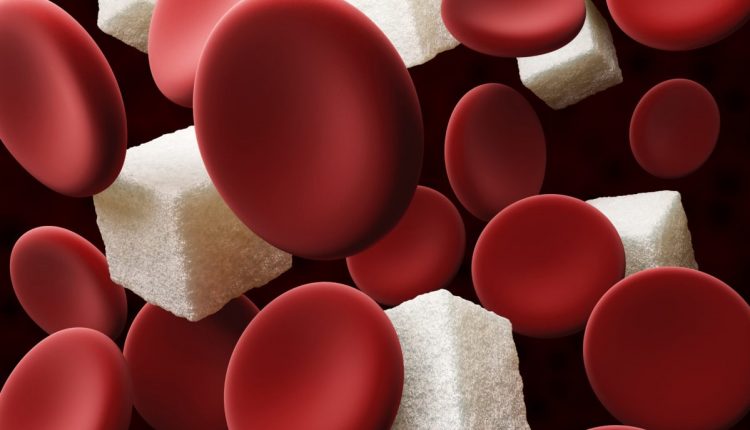
Type 1 and type 2 diabetes: what are the differences?
Diabetes mellitus is a disease caused by the sum of several factors, particularly in western countries. These include, on the one hand, the progressive ageing of the population, poor eating habits and the consequent increase in the number of obese people; on the other hand, the increase in early diagnosis and, on the other hand, the decrease in the mortality rate of diabetic patients
Diabetes mellitus: what it is and what causes it
Diabetes is caused by hyperglycaemia, i.e. an increase in the level of glucose in the blood, due to a defect in the secretion or inadequate action of insulin, the hormone produced by the cells of the pancreas and responsible for controlling sugar levels.
There are two different types of diabetes mellitus: type 1 diabetes, which affects between 3% and 5% of diabetics, and the more common type 2 diabetes, which affects more than 90% of patients with diabetes.
These are two very different diseases, both in terms of their onset and treatment and their impact on patients’ lives.
Although it is sometimes a subtle disease, which can occur without any obvious symptoms and remain silent for some time, in acute cases the presenting symptoms include fatigue, polyuria (increased urinary volume) with subsequent polydipsia (increased thirst), weight loss and abdominal pain.
The long-term consequences of hyperglycaemia lead to the appearance of the dreaded complications of diabetes: retinopathy, nephropathy, neuropathy and cardiovascular diseases (coronary artery disease, stroke, arteriopathy of the lower limbs).
Diabetes mellitus can be diagnosed with a simple blood glucose test using a normal blood sample.
Type 1 diabetes: a severe autoimmune disease
Type 1 diabetes tends to occur particularly in childhood and adolescence (but more rarely also in adult patients) and is caused by a total lack of insulin, caused by the destruction of the beta cells of the pancreas due to the appearance of autoantibodies.
We do not yet know the actual causes of this abnormal immune response, but it would appear to be associated with hereditary factors influenced by environmental determinants (e.g. certain viral infections).
Type 2 diabetes: a multifactorial disease
Type 2 diabetes, on the other hand, tends to occur after the age of 30-40.
Several mechanisms are involved in the genesis of this metabolic pathology, but classically the initial defect is insulin resistance, i.e. reduced insulin action in the target organs, which leads on the one hand to excess hepatic production of glucose and on the other to its reduced use by the muscles.
Among the most important risk factors for the onset of type 2 diabetes are family history, a sedentary lifestyle, a diet too rich in fats and sugars, and being overweight.
Hyperglycaemia in this disease can have a gradual onset, which is why type 2 diabetes can behave silently for several years, before leading to the development of symptoms and often at the onset may already be present complications typical of the disease.
Is it possible to prevent diabetes?
Unfortunately, it is not currently possible to prevent the onset of type 1 diabetes, although studies are underway on the possibility of intervening in the earliest stages of the disease.
However, it is possible to prevent type 2 diabetes by adopting a healthy diet low in fat and calories, taking regular exercise and avoiding being overweight.
These measures are particularly effective in the case of type 2 diabetes: there are studies confirming that an appropriate lifestyle is more effective than pharmacological intervention in reducing blood sugar levels.
Insulin and hypoglycaemic drugs: treatment options
Type 1 diabetes can only be treated with insulin.
Insulin can be administered either with classic subcutaneous injections or with continuous infusion systems (the pump).
With this treatment, which must be continuous and last for life, patients can lead a normal daily life.
It is very important, however, that they refer to specialised and multidisciplinary centres, both for the treatment of diabetes itself and for the treatment of complications that may arise in association with this disease.
For the treatment of type 2, however, we have several therapeutic options available, and indeed in recent years we have seen the introduction of several new ‘innovative’ drugs that will significantly change clinical practice over the next few years, having also been shown to have a significant benefit on cardiovascular risk, which is the major cause of mortality in type 2 diabetes.
In particular, the reference is to analogues of GLP-1 (Glucagon-like peptide-1), a hormone whose task is to facilitate the secretion of insulin, produced by intestinal cells following the ingestion of food; and to glyflozines, or inhibitors of sodium glucose co-transporter 2 (SGLT2), which promote the elimination of glucose through the urine, through the action on a renal receptor.
However, it must be stated that there is no single drug therapy that is valid for all patients with type 2 d.: therapies must be tailored to the needs of the individual patient, based on his or her characteristics and clinical history.
Read Also:
Recognising Diabetes, A Key Moment In Patient Intervention
Diabetes, Yale University Researchers Develop Oral Drug With Dual Effect



